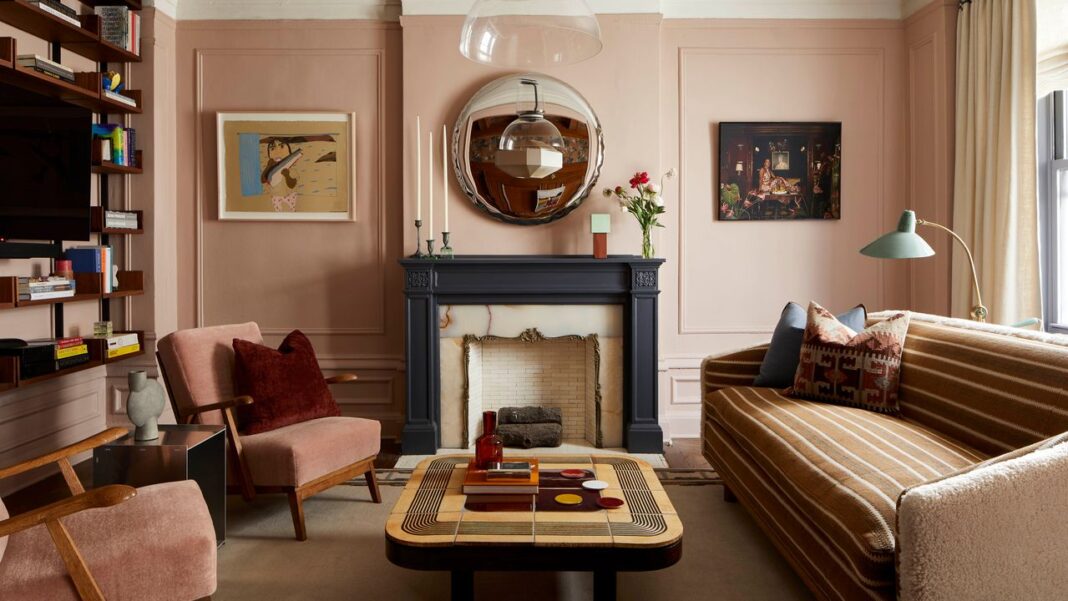A pleasant feeling of déjà vu followed one Connecticut-based couple as they toured a potential pied-à-terre in a landmark 1912 building on New York’s Upper West Side—and it wasn’t because they had viewed a similar one on a higher floor early in their search. “The old oak cabinetry in the kitchen is exactly what we had in our apartment,” says the wife, referring to the home she and her husband shared before becoming parents and setting off for the suburbs. He adds, “It felt like it was meant to be. The shape of the kitchen was the same as it was in the apartment we started our marriage in.”
So, after jumping to purchase the property, it was with a sense of nostalgia that they embarked on the renovation of the 1,800-square-foot space. To help them maintain the apartment’s romance instead of going overboard on novelty, they turned to sister design team Steph and Pamela Katch, of AD PRO Directory firm Katch Interiors, who adhered to the structural bones that honor the building and neighborhood’s history while adding the fresh palette and materials that allow for modern living. “Their key insight was, ‘Don’t fight what the apartment is,’” the husband said of the designers’ sage advice. “‘Don’t make the apartment something it’s not.’”
To straddle that line, they replaced the old plumbing in the bathrooms but kept some of the apartment’s quirky electrical systems; in the kitchen, they removed the ho-hum tile with zellige but retained those beloved oak cabinets. And rather than popping out moldings and skim coating the walls, they painted over the estate-condition details to add yet another layer of age. “That would have been incongruous with our mission,” says Steph, recalling the decision to keep the process as lo-fi as possible. “The edges are softer and duller, less distinct and crisp.”
A dose of freshness arises in the interplay of contrasting textures and the clever blend of materials and furnishings that hint at a collected sense of the past. The designers leaned into the moodiness of the often shaded apartment, relying on dramatic colors instead of bright white surfaces to establish a rhythm of temporal continuity. French and Italian midcentury pieces enliven Victorian pink walls (courtesy of Benjamin Moore’s Cedar Ridge) and an existing onyx fireplace surround in the living room; a canary-hued sideboard made of glass and powder-coated steel pops against the traditional oak paneling in the dining room. “The mix of eras creates a lot of interest and depth, so it doesn’t feel stagnant,” says Pamela of the home’s eclectic aesthetic. “It doesn’t feel like you’re stuck in an era.”

